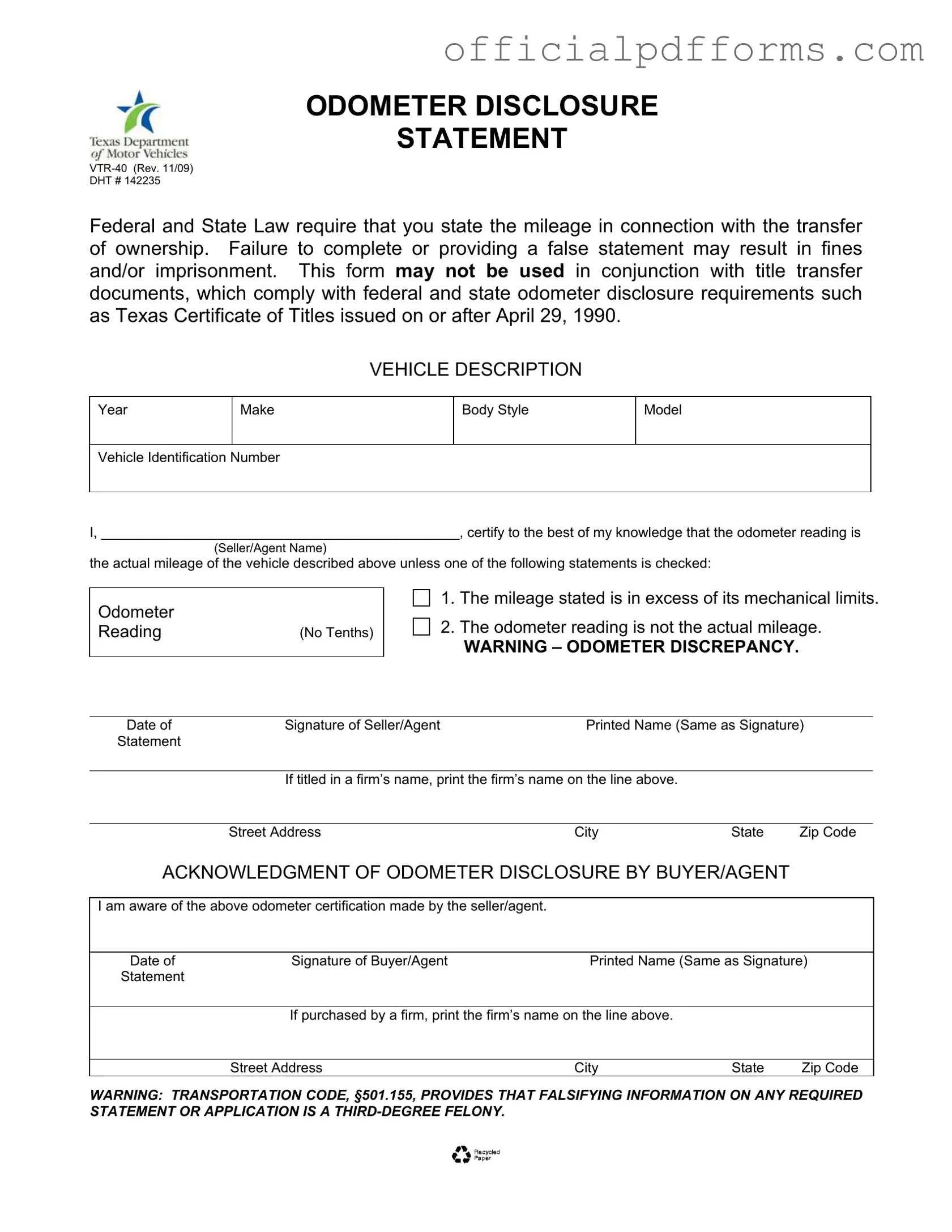The Texas Odometer Statement form, also known as VTR-40, serves a critical role in vehicle ownership transfers. It ensures that both the seller and buyer are aware of the vehicle's mileage at the time of sale. This transparency helps prevent fraud and protects consumers from purchasing vehicles with tampered odometers. By completing this form, sellers affirm that the mileage stated is accurate to the best of their knowledge, unless otherwise noted.
Who is required to complete the Odometer Statement?
Both the seller and buyer are involved in the completion of the Odometer Statement. The seller must provide the current odometer reading and certify its accuracy. The buyer, or their agent, must acknowledge the odometer disclosure. This mutual agreement is essential for maintaining trust in the transaction and ensuring compliance with federal and state laws regarding vehicle sales.
What happens if the Odometer Statement is not completed?
Failure to complete the Odometer Statement can lead to serious consequences. Not only does it violate federal and state laws, but it may also result in fines and even imprisonment for the seller if found guilty of providing false information. Additionally, without a completed statement, the buyer may face difficulties in registering the vehicle or could be held liable for any discrepancies that arise after the sale.
What should I do if the odometer reading is inaccurate?
If you suspect that the odometer reading is inaccurate, it’s crucial to check the options provided on the form. The seller can indicate that the mileage is either in excess of its mechanical limits or that the odometer reading is not the actual mileage. This disclosure protects both parties by clarifying the situation and preventing misunderstandings regarding the vehicle's history.
Can the Texas Odometer Statement be used with other title transfer documents?
No, the Texas Odometer Statement cannot be used in conjunction with title transfer documents that already comply with federal and state odometer disclosure requirements. For vehicles titled on or after April 29, 1990, the odometer disclosure is typically included in the title transfer paperwork itself. It is important to ensure that the correct forms are used to avoid complications during the transfer process.
Falsifying information on the Texas Odometer Statement is considered a serious offense. Under Transportation Code §501.155, it is classified as a third-degree felony. This means that individuals found guilty of providing false odometer readings could face significant legal penalties, including imprisonment and hefty fines. The law emphasizes the importance of honesty in vehicle transactions to protect consumers and maintain the integrity of the automotive market.
